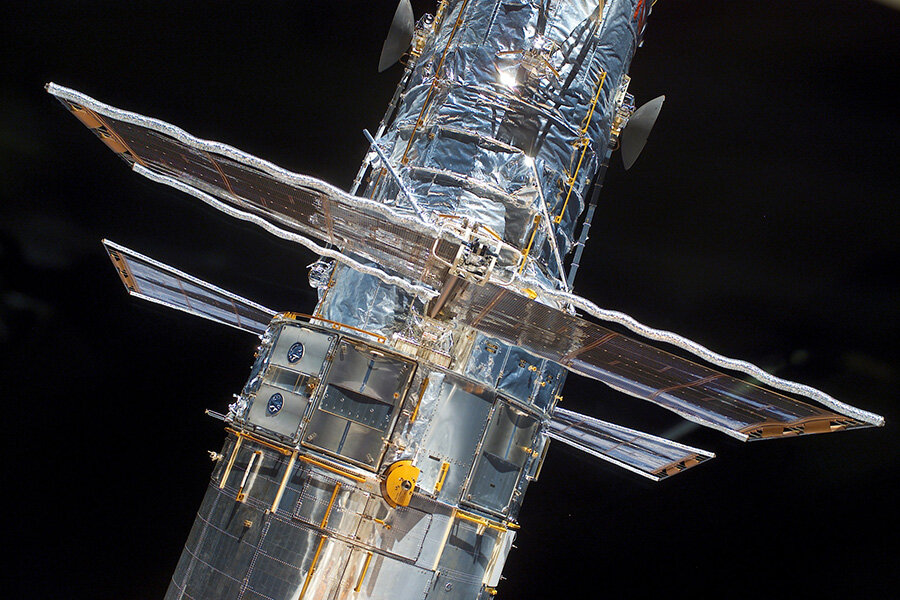Hubble Telescope timeline
Loading...
- 1977: Congress approves funding for the Large Space Telescope (LST).
- 1978: Astronauts begin training for space telescope missions.
- 1979: Work begins on the telescope’s 2.4-meter diameter mirror.
- 1981: Space Telescope Science Institute begins operations in Baltimore.
- 1983: LST is renamed Hubble Space Telescope, after astronomer Edwin Hubble.
- 1985: Hubble is completed.
- 1990: Shuttle Discovery launches Hubble into orbit on April 25. Two months later, flaws are discovered in the primary mirror.
- 1993: First servicing mission is launched.
- 1994: Hubble sends back images of comet Shoemaker-Levy 9 as it hits Jupiter.
- 1995: It takes the famous “Pillars of Creation” photo of the Eagle Nebula.
- 1996: Hubble “deep field” images reveal an unimaginable number of galaxies.
- 2001: Observations detect elements of an exoplanet.
- 2002: On the third servicing mission, new solar panels are installed.
- 2005: Images reveal two previously unknown moons orbiting Pluto.
- 2008: Hubble completes 100,000th orbit.
- 2010: Distant galaxies show what the universe looked like at one-tenth its current age.
- 2011: The 10,000th scientific paper is published using Hubble data.
- 2012: Hubble sends back dramatic images of a planetary nebula, NGC 5189.
- 2013: NASA launches the Frontier Fields project to look at galaxies deeper in the universe than ever before.
- 2014: Hubble spots one of the farthest, smallest galaxies ever seen – 13 billion light-years away.
- 2014: Hubble finds best evidence yet of an ocean on Ganymede, a moon of Jupiter.
Sources: European Space Agency, NASA





